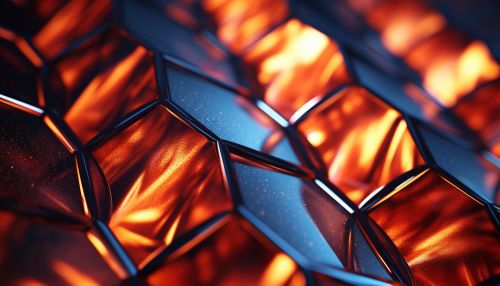Materials Science of Superhard Materials
Introduction
Materials science is a multidisciplinary field that involves the study and manipulation of materials at the atomic and molecular level. One of the most intriguing areas of materials science is the study of superhard materials. These materials exhibit exceptional hardness, surpassing that of traditional hard materials such as diamond. This article delves into the materials science of superhard materials, exploring their properties, synthesis, and applications.


Definition and Properties
Superhard materials are defined as those with a hardness value exceeding 40 gigapascals (GPa) when measured by the Vickers hardness test. The hardness of a material is its resistance to localized plastic deformation, typically by indentation. The term "superhard" is often associated with materials that have hardness values close to or exceeding that of diamond, the hardest known natural material.
Synthesis of Superhard Materials
The synthesis of superhard materials is a complex process that requires precise control over the conditions of formation. There are several methods used in the synthesis of these materials, including high pressure, high temperature (HPHT) synthesis, chemical vapor deposition (CVD), and physical vapor deposition (PVD).
Classification of Superhard Materials
Superhard materials can be broadly classified into three categories: diamond, cubic boron nitride (c-BN), and wurtzite boron nitride (w-BN). Each of these materials has unique properties that contribute to their superhard nature.
Diamond
Diamond is the hardest known natural material, with a Vickers hardness of approximately 100 GPa. It is a covalently bonded material, meaning its atoms are linked by shared electron pairs. This strong bonding contributes to its exceptional hardness.
Cubic Boron Nitride
Cubic boron nitride (c-BN) is the second hardest known material after diamond. It has a Vickers hardness of approximately 50 GPa. Like diamond, c-BN is a covalently bonded material. However, its structure is slightly different, which results in a lower hardness value.
Wurtzite Boron Nitride
Wurtzite boron nitride (w-BN) is another superhard material with a Vickers hardness close to that of c-BN. It has a different crystal structure than c-BN, which contributes to its unique properties.
Applications of Superhard Materials
Due to their exceptional hardness, superhard materials find a wide range of applications in various industries. They are used in cutting and drilling tools, abrasives, and wear-resistant and protective coatings. In addition, they are used in the electronics industry for heat sinks and substrates in high-power electronic devices.
Future Directions in Superhard Materials Research
The field of superhard materials is continually evolving, with ongoing research aimed at discovering new superhard materials and improving the properties of existing ones. Areas of focus include the development of new synthesis methods, the exploration of novel materials, and the enhancement of the properties of existing superhard materials through doping and other modifications.
